How to Get a Canada Travel History Report for Your Future Visa Applications
A Travel History Report, as per the CBSA, is a record of a traveler’s entries, exits, or both into Canada. Should you need to use it in your visa applications, you can request online or through a representative. You can read our guide on How to Get a Canada Travel History Report.

Information is available for entries made on or after August 1, 2000, by all travelers entering Canada. It may take 30 days to get a Canada Travel History Report. If you have a plan for a visa application, you need to do it beforehand.
- How to Get up to 10 Year Multiple Entry Canada Visa for Filipinos
- How to Apply For A Canada Tourist Visa With Your Philippines Passport [Guide to Canadian Visa Online Application]
- CAN+ Visa Program – Expedited Canadian Visa Guide for Filipinos
- Canada Travel Guide: Toronto, Montreal, and Quebec City
- Here’s why Auckland, New Zealand & Vancouver, Canada are so attractive to Expats
Table of Contents
When Not to apply for a Canada Travel History Report
The Immigration, Refugees, and Citizenship Canada (IRCC) collect your travel history on your behalf. Choose the “yes” option on your application form.
- Applying for Canadian Citizenship (Adult and Minor)
- Applying for a Permanent Resident card
How to make a request a Canada Travel History Report under the Privacy Act
Who can Request?
You must be applying for yourself and be one of the following:
- In Canada
- Canadian Citizen
- Permanent Resident
Steps in getting a Travel History Online Under the Privacy Act
STEP 1: Go to this link and click “continue”.
STEP 2: Go to Request for Personal Information.
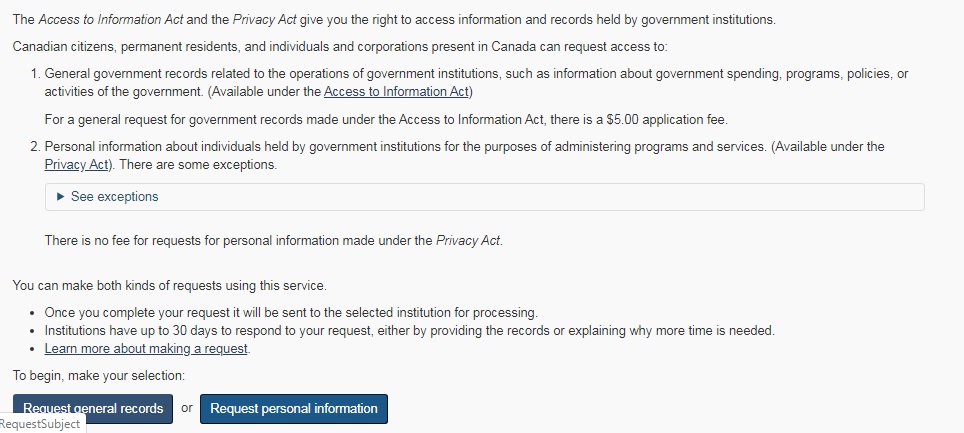
STEP 3: Select which answer is correct for you, for example, yourself.

STEP 4: Search for the “Canada Border Services Agency” and click it.
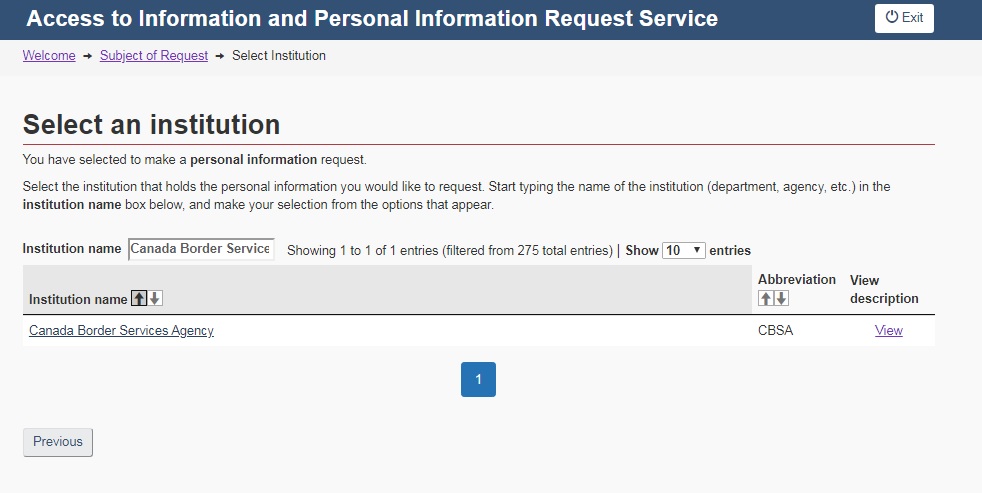
STEP 5: Exit to Pilot Site and click “Next.”

STEP 6: Read the Privacy Notice.
STEP 7: Answer the questions asked.

STEP 8: State the Record you are asking – Travel History.
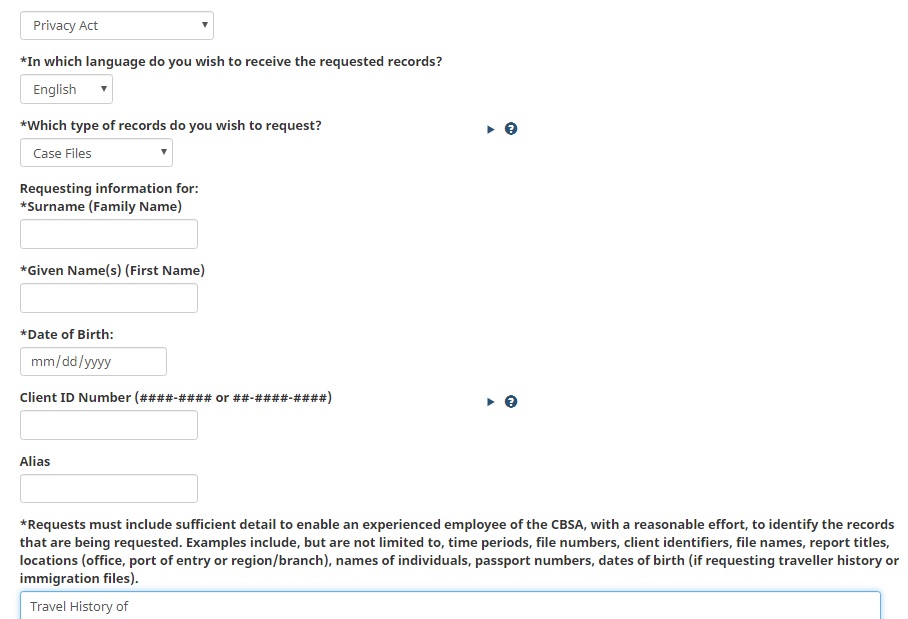
STEP 9: Attach documents – to support your application.
STEP 10: Review the things you have typed and submit it.
STEP 11: Wait for the travel history to be sent to you.
Steps in getting a Travel History Under the Privacy Act through a Written Request
STEP 1: Fill in this Personal Information Request Form. Request from the Canada Border Service Agency. Please also put details like date of birth and name or passport number if you are requesting for travel history. Sign the form.
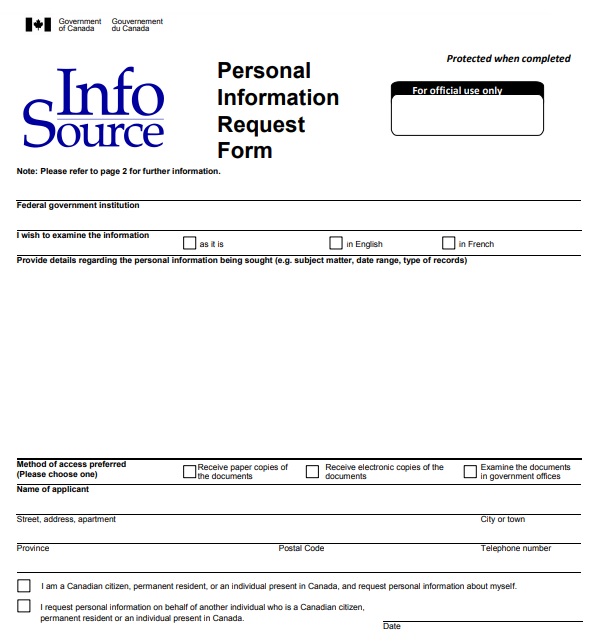
STEP 2: Send the request by mail to:
Canada Border Services Agency
Access to Information and Privacy Coordinator
333 North River Road
14th Floor, Tower A
Vanier, Ontario
K1A 0L8
Or Fax to 343-291-7012.
STEP 3: Wait for the travel history to be sent to you.
How to Request a Canada Travel History Report under the Access to Information Act
Requests with regards to:
- Information about CBSA
- Information created CBSA
- Personal information submitted by a representative where the client is:
- Not in Canada
- Not a Canadian Citizen
- Not a Permanent Resident
Steps in getting a Travel History Online Under the Access to Information Act
STEP 1: Go to this link and “continue.”
STEP 2: Go to Request General Records.

STEP 3: Skip this since we already know which institution to choose.
STEP 4: Search for the “Canada Border Services Agency” and click it.

STEP 5: Exit to Pilot Site and click “Next.”
STEP 6: Read the Privacy Notice.
STEP 7: Answer the questions asked.
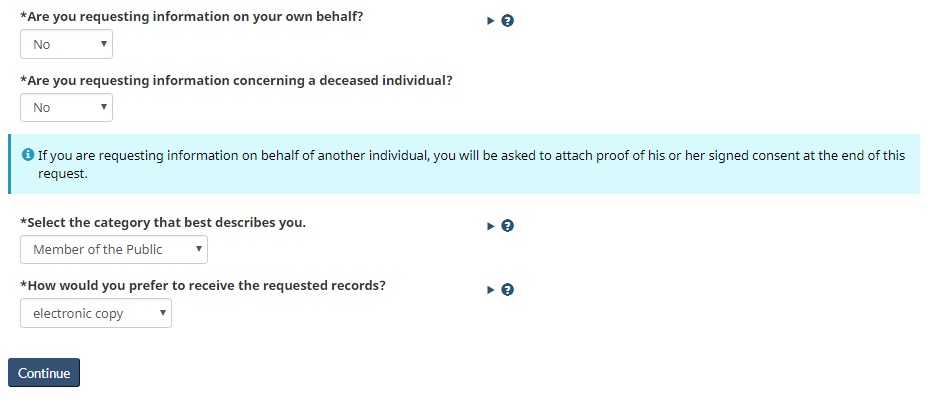
STEP 8: State the Record you are asking – Travel History.
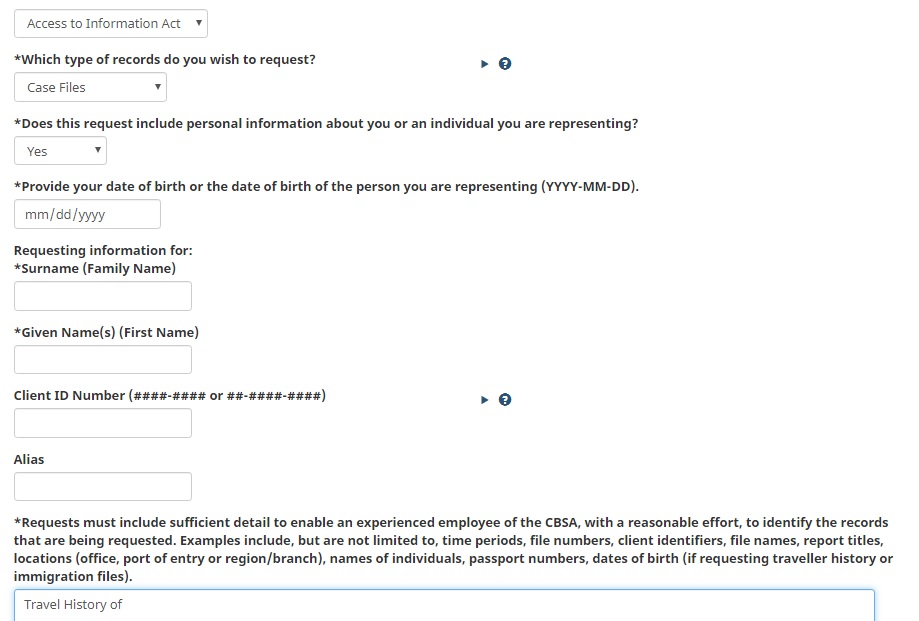
STEP 9: Attach documents – to support your application. If you are a representative, you will need to upload Authority to Release Personal Information to a Designated Representative.
STEP 10: Review the things you have typed and submit it.
STEP 11: Pay a fee of $5.
STEP 12: Wait for the travel history to be sent to you.
Steps in getting a Travel History Under the Access to Information Act through a Written Request
STEP 1: Gather the following Documents:
- Access to Information Request Form. Request from the Canada Border Service Agency. Type details like date of birth and name or passport number of the person you are asking the travel history for. Sign the form.
- Authority to Release Personal Information to a Designated Representative. Should you be the representative of a person.
- Cash Payment or Check or Money Order of $5 to Receiver General for Canada
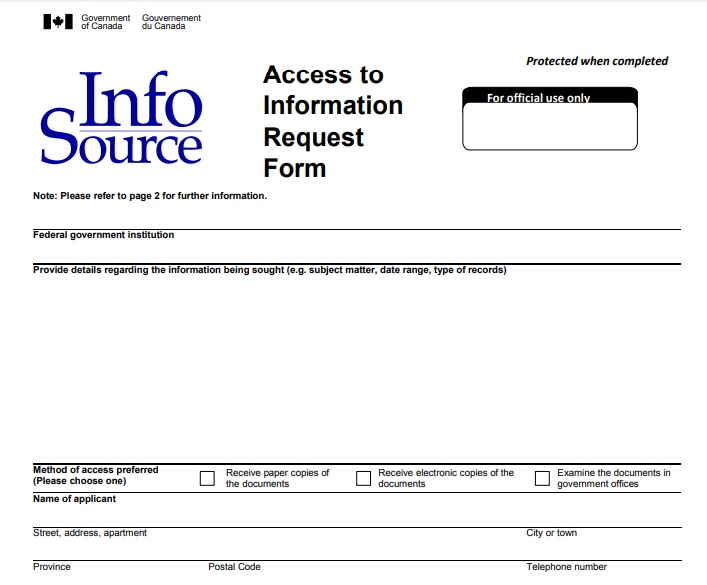
STEP 2: Send the request by mail to:
Canada Border Services Agency
Access to Information and Privacy Coordinator
333 North River Road
14th Floor, Tower A
Vanier, Ontario
K1A 0L8
Or Fax to 343-291-7012.
STEP 3: Wait for the travel history to be sent to you.
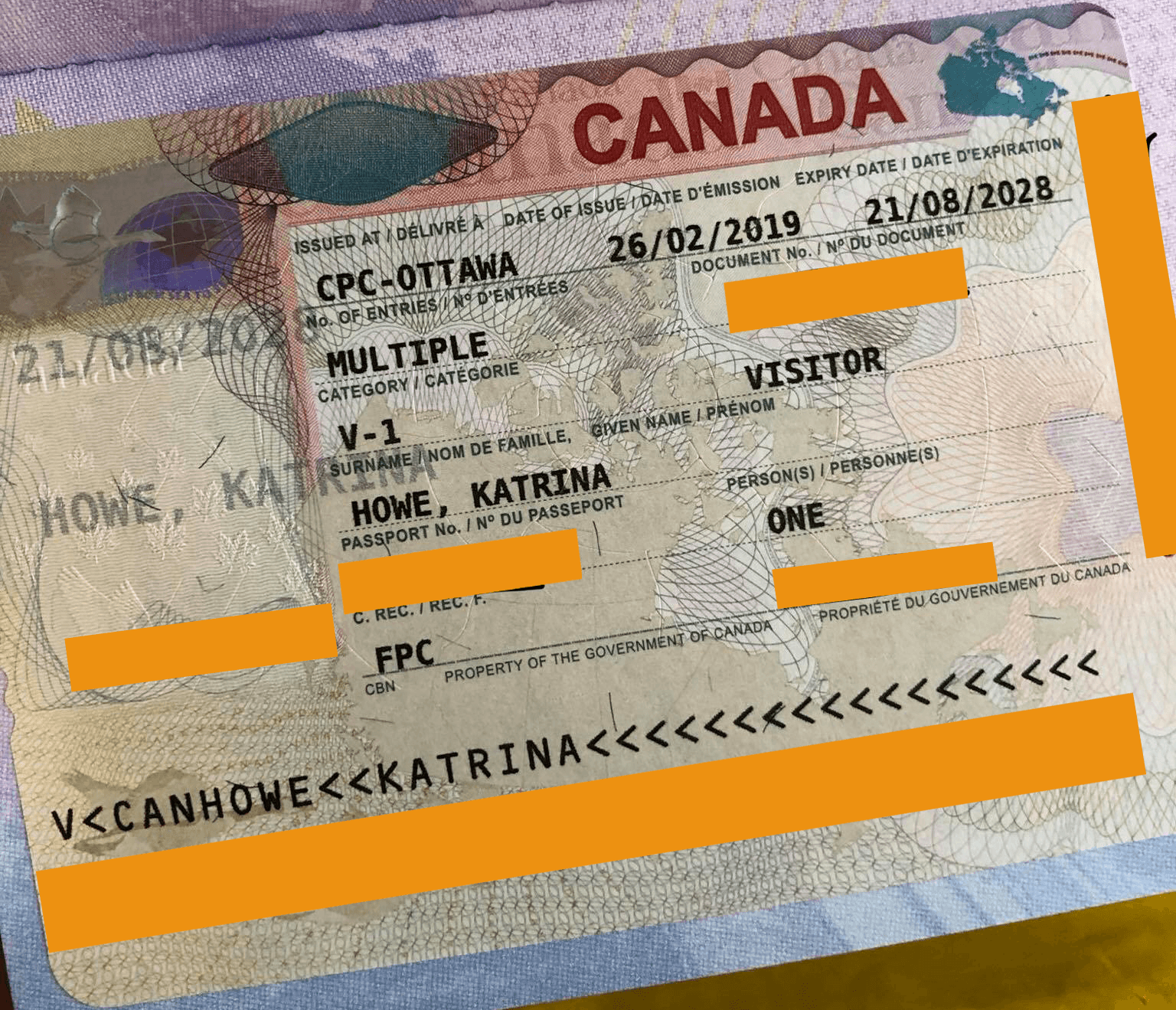
It will take mostly 30 days to process your request for a Canada Travel History Report. You can apply for yourself with the Privacy Act. If you can’t do so, get a representative in Canada. I hope this will be helpful, especially in your Visa Applications.

Are you on Pinterest? Pin these!



Thank you very much! This info is very helpful. It should be posted on official Canadian government website.
It’s on their website
Thank you ,tried to apply a tourist visa i been in vancouver 2yrs ago but with my employer i want to go back there alone for tourist visa .Any advised i am working in SG right ..Thank you appreciate ❤❤❤❤❤?Godbless